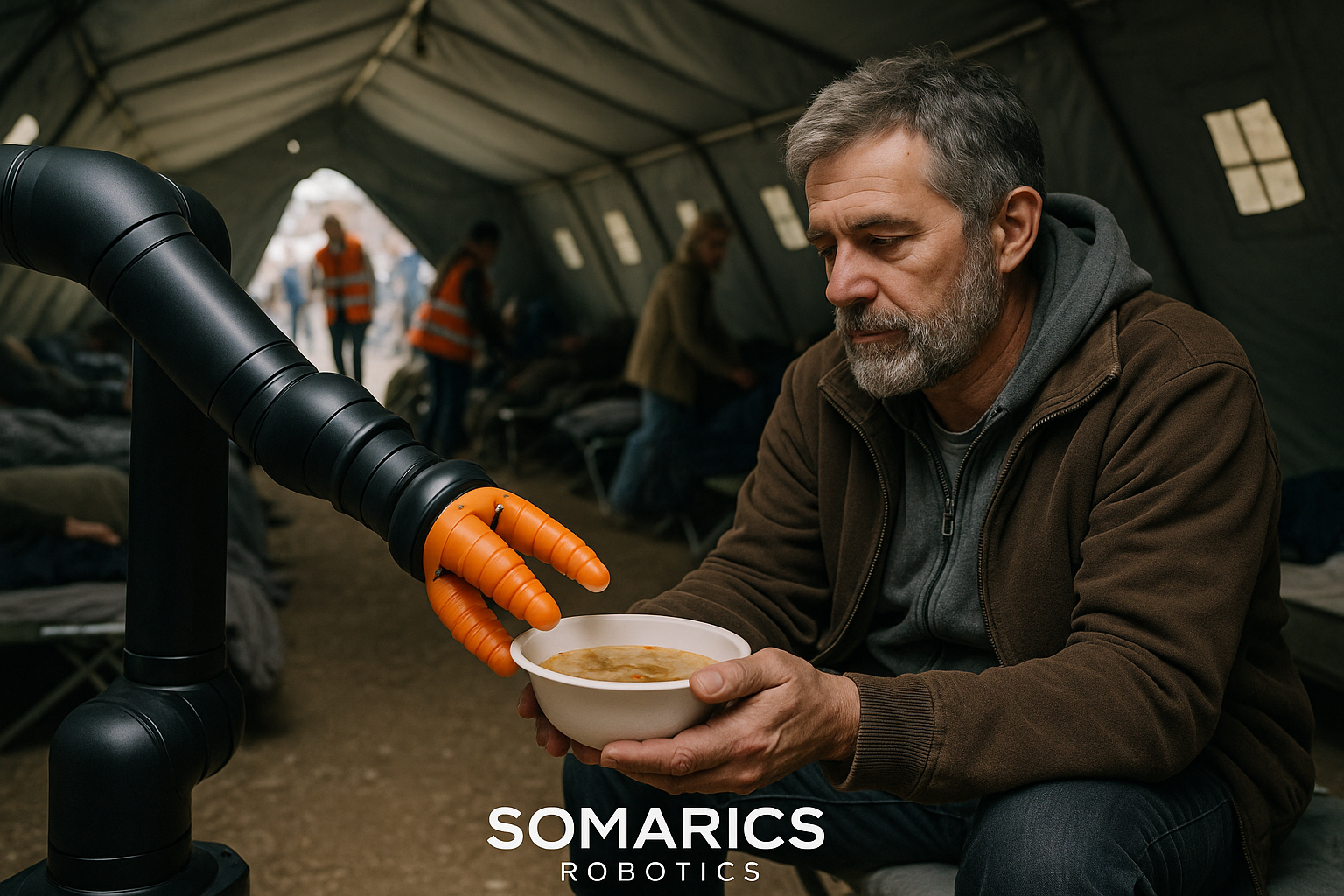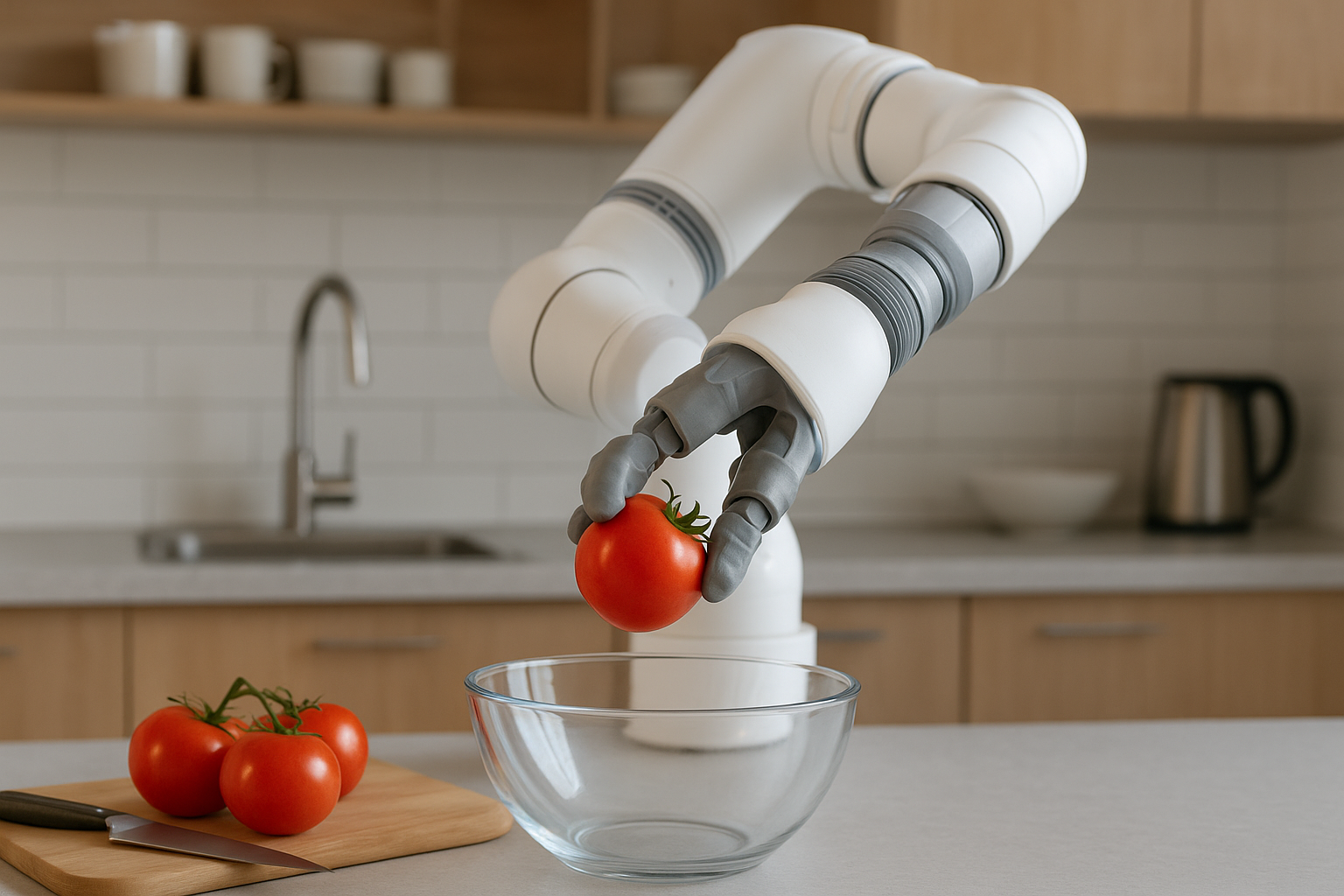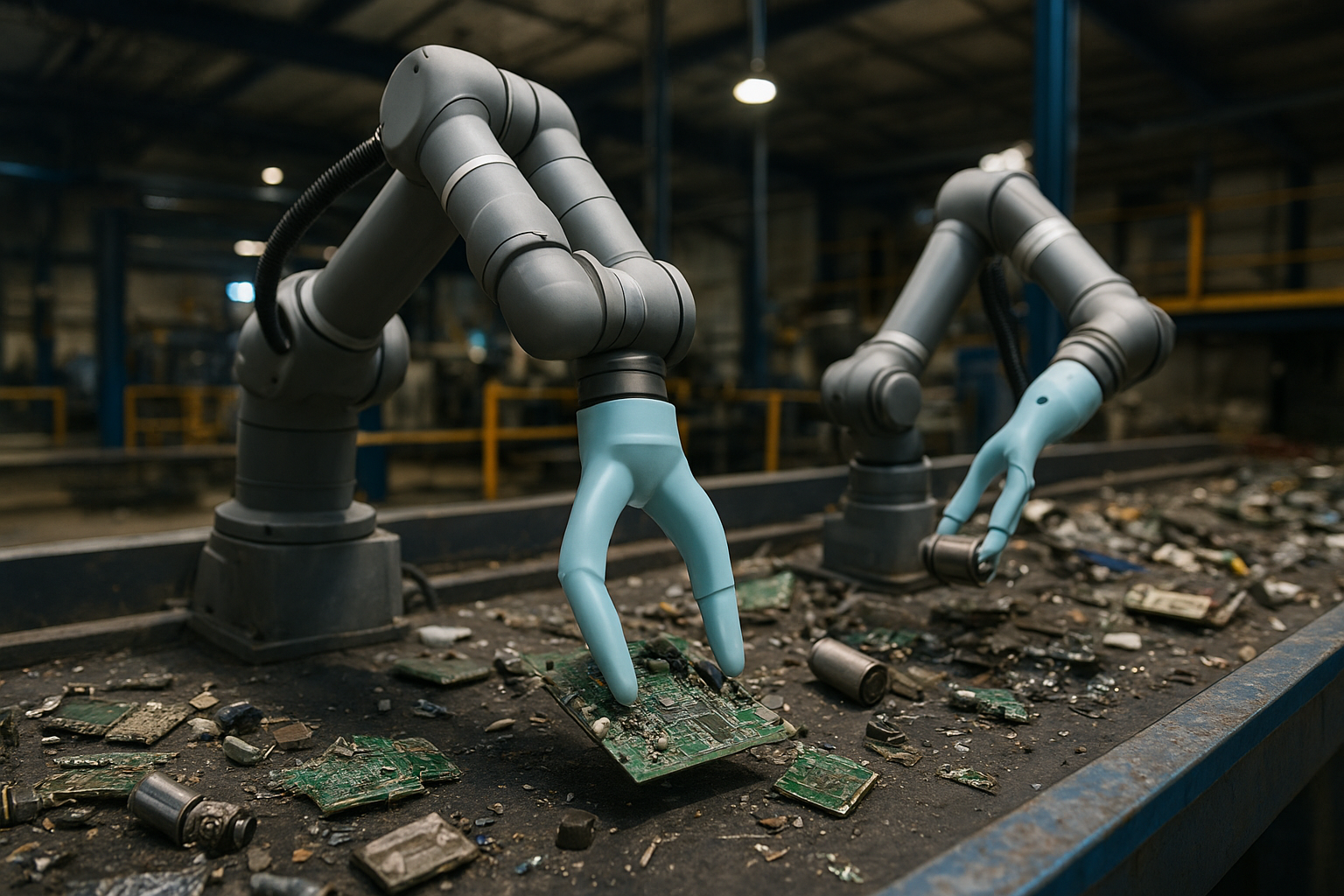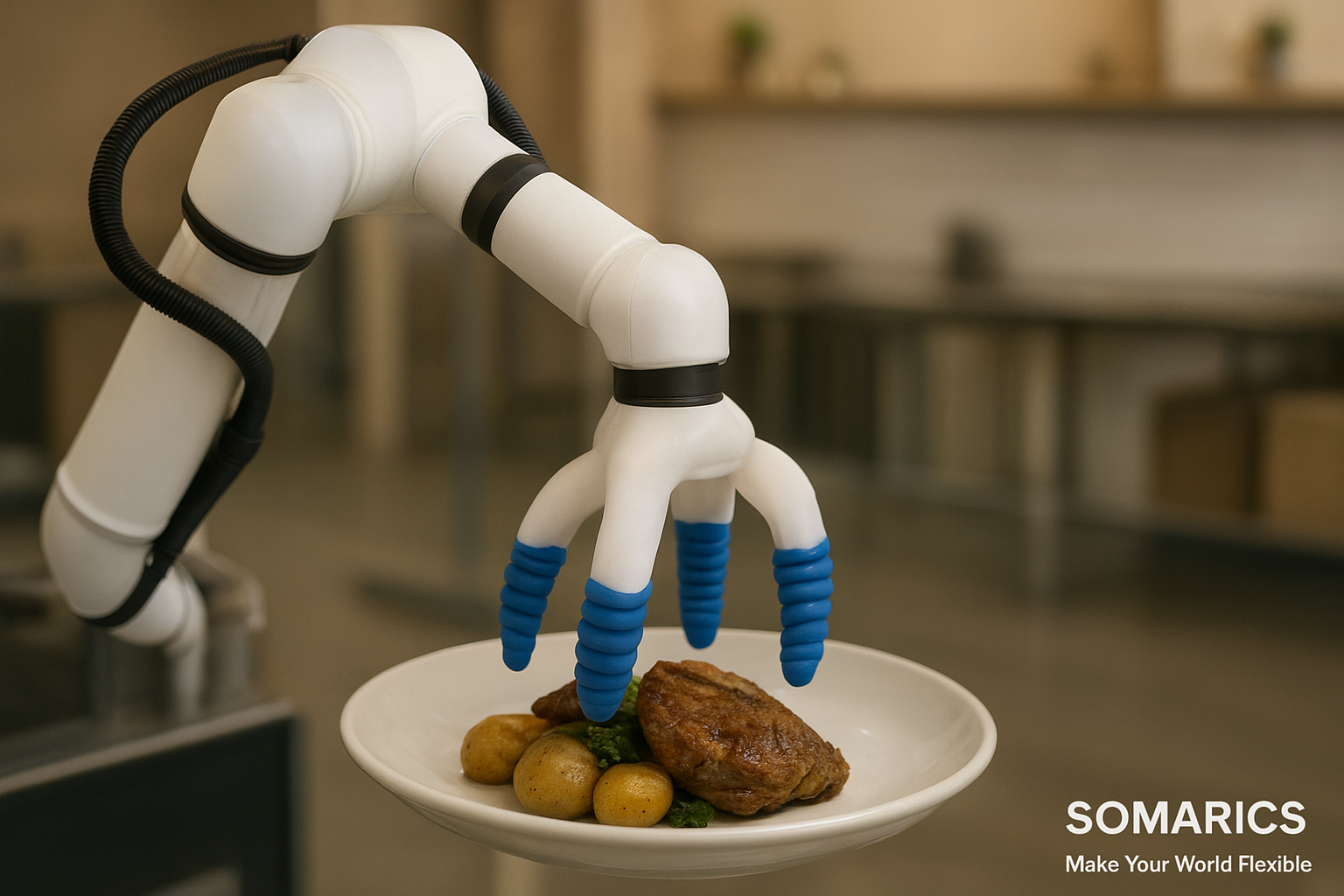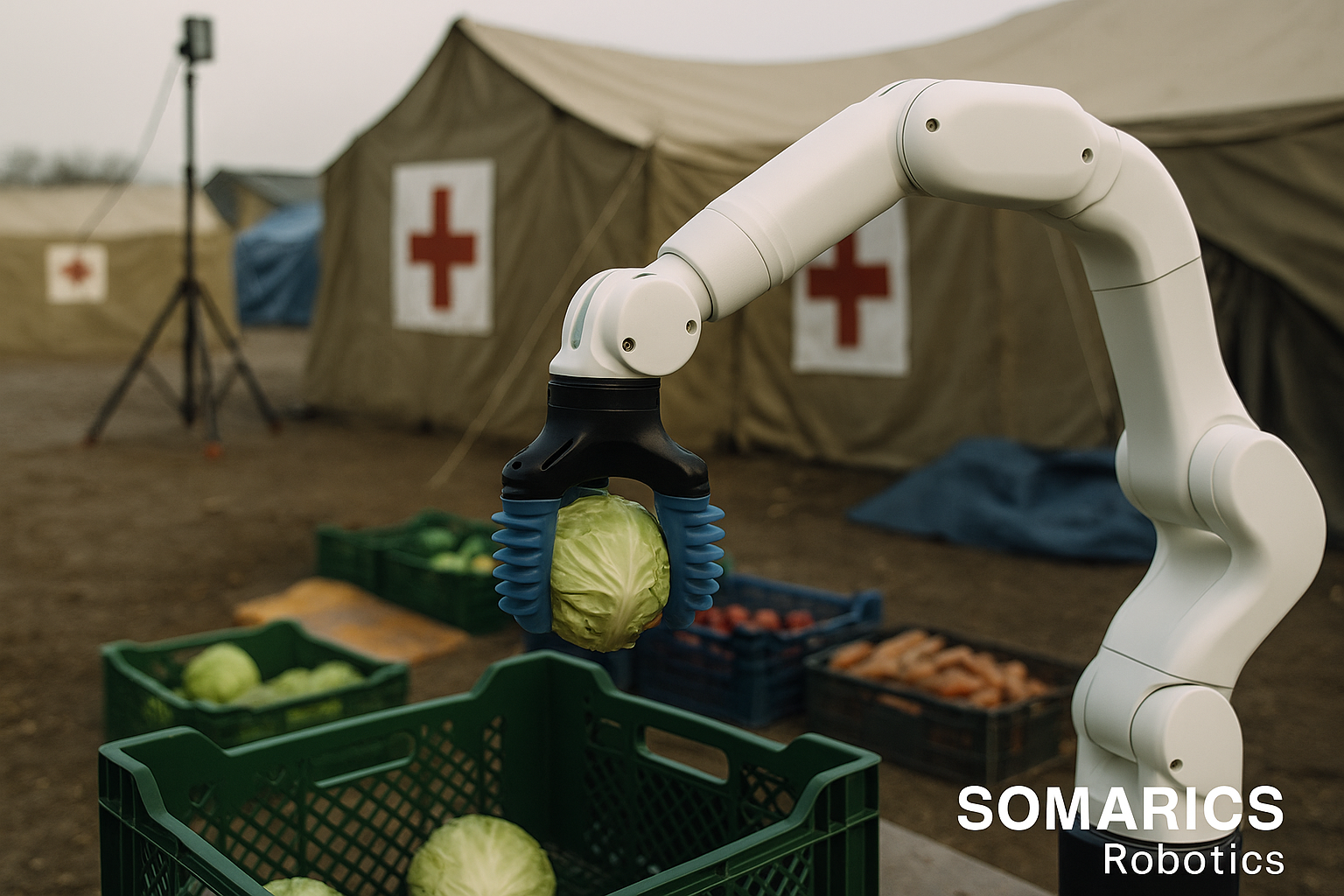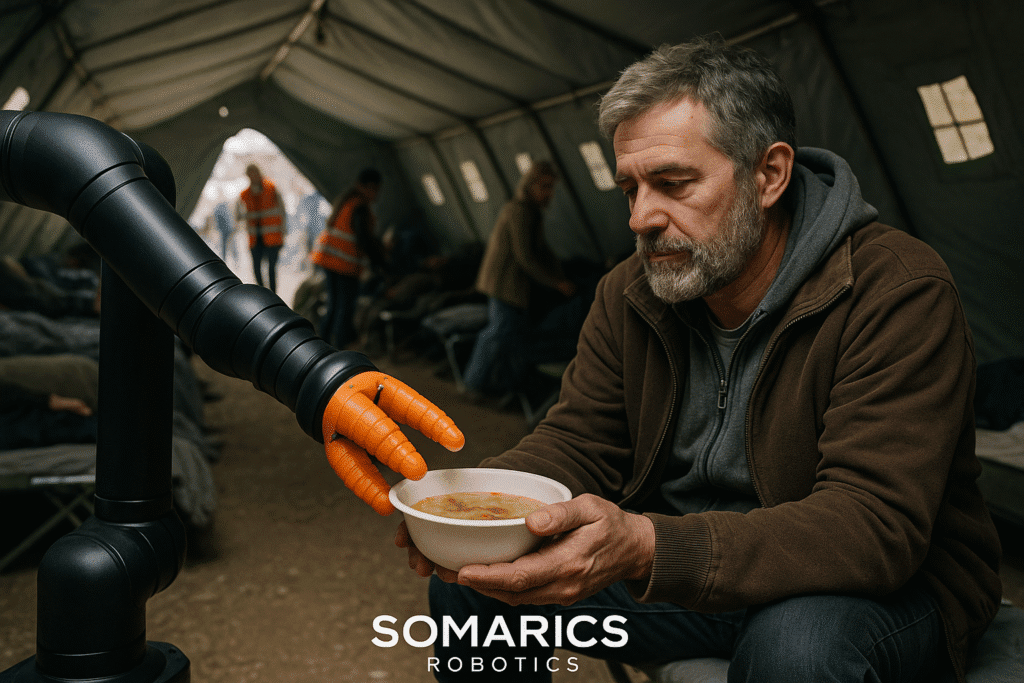
1. Introduction: A Fragile Response in a Volatile World
As the number and intensity of humanitarian crises surge, from climate-driven floods to geopolitical conflicts, the global aid community faces a hard truth: current emergency infrastructures are not keeping up. Temporary camps are erected overnight, medical and logistical services become overstretched, and millions of displaced individuals are forced to rely on systems that are often understaffed, under-resourced, and inflexible.
In such environments, where every second counts and human resources are scarce, automation could offer a lifeline. But not all robots are suitable. Traditional rigid robots are often too heavy, too complex to deploy quickly, and unsafe to operate in close proximity to vulnerable populations like children, the elderly, or injured individuals.
Enter soft robotics, a fundamentally different class of machines. Built with lightweight, deformable materials and driven by pneumatic or hydraulic systems, soft robots are designed to work safely in unstructured, unpredictable environments. They are not meant to replace human empathy, but to support and extend human capabilities, especially when time and safety are critical.
2. The Challenge: What Emergency Camps Really Look Like
To understand the potential of soft robotics, we must first acknowledge the realities on the ground. Emergency and refugee camps often share several characteristics:
- Lack of infrastructure: No reliable power grid, limited water access, fragile shelter systems.
- High human density: Overcrowded spaces with little separation between medical, food, and sanitation areas.
- High variability: Every crisis has different resource availabilities, needs, and population profiles.
- Short setup time: Camps must be operational within hours or days, not weeks.
- Limited skilled personnel: Many aid workers operate under extreme physical and emotional stress, often without specialized technical training.
This environment is inherently resistant to rigid automation. It requires tools that are modular, safe-by-design, easy to deploy, and capable of performing meaningful tasks with minimal setup.
3. The Role of Soft Robotics in Emergency Response
Soft robotics can address several critical needs in disaster and refugee camps, including:
- Low-Risk Human-Robot Interaction
Soft actuators and manipulators can operate close to humans, delivering food, lifting bedding, and adjusting body positions, without posing injury risk.
- Flexible Gripping and Handling
Unstructured objects like fabric, food items, bottles, or irregular containers can be gently manipulated by soft robotic grippers, even with variation in shape, weight, or texture.
- Safe Assistance in Medical Tents
Soft robotic arms can be used to hold IV bags, adjust lighting, support lightweight tools, or even assist nurses in patient repositioning, especially helpful in pediatric or trauma care settings.
- Support for Sanitation & Waste Sorting
Adaptable soft end-effectors can assist in semi-automated waste separation (e.g. separating sharp objects from medical waste), reducing human exposure to biohazards.
- Delivery in Dangerous Zones
Mounted on compact mobile platforms, soft robotic arms can deliver medicine, food, or water to zones where human access is dangerous due to unstable structures, fires, or contamination.
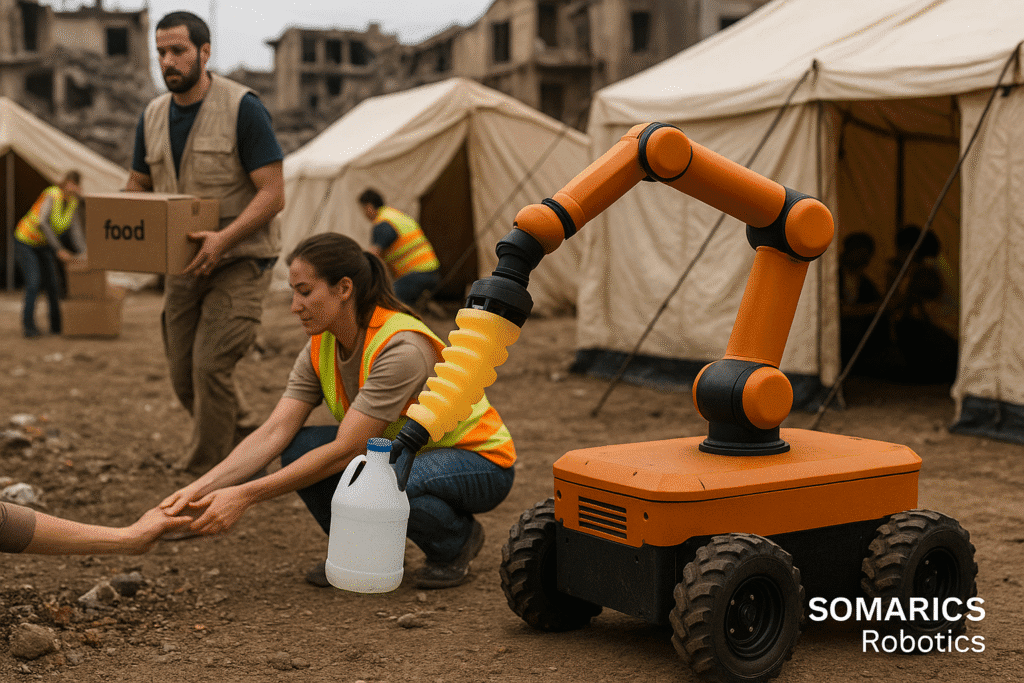
4. Application Scenarios: Soft Robotics in Action
Let’s walk through hypothetical but feasible scenarios where soft robotic systems would make a real difference:
🔹 Scenario A: Aftershock Medical Tent
In a tent housing 30 trauma patients post-earthquake, soft robotic arms hold flashlights for surgeons, adjust patient beds, and deliver sterilized tools, freeing up nurses for core tasks.
🔹 Scenario B: Child-Friendly Food Distribution
A soft robotic mobile unit autonomously navigates a refugee camp’s child section, delivering small food packets with its padded gripper, no metal claws, no exposed wires, no fear.
🔹 Scenario C: Toxic Zone in Flood Aftermath
A mobile unit equipped with a soft manipulator places moisture-absorbent barriers around a broken sewage line while collecting soil samples for contamination testing.
These scenarios are not futuristic fantasies. With current materials science, low-pressure pneumatic actuators, and compact sensing systems, such solutions are within reach.
5. Why Soft Robotics? Why Not Conventional Robots?
| Factor | Traditional Robotics | Soft Robotics (SOMARICS Approach) |
| Safety Near Humans | Medium to Low | High (inherently compliant) |
| Deployment Time | Days to weeks | Hours (modular & portable) |
| Infrastructure Requirements | High (power, space, cooling) | Low (lightweight, low-voltage) |
| Task Flexibility | Limited | High (can adapt to unstructured tasks) |
| Risk in Unpredictable Settings | High | Low (can deform, absorb shock) |
Soft robotics doesn’t aim to outperform traditional robots in speed or precision. Instead, it succeeds where adaptability, portability, and human safety are more important than speed or force.
6. Opportunities for Aid Organizations and Governments
For NGOs, UN agencies, and emergency management departments, soft robotics represents a new category of tools with specific, high-impact applications:
- Rapid Deployment Units: Pre-assembled soft robotic units in carry-on kits, deployable with handheld air pumps or portable compressors.
- Plug-and-Play Functionality: No need for roboticists on the ground. Pre-programmed tasks with minimal human intervention.
- Human-Centered Automation: Designed not to replace field workers, but to make their limited time more effective.
By adopting soft robotics early, humanitarian actors can gain operational agility, meeting needs more quickly, safely, and at scale.
7. ESG and Global Sustainability Alignment
Soft robotic systems align strongly with modern ESG and SDG principles:
- Environment: Energy-efficient, biodegradable or recyclable materials possible
- Social: Enhanced safety for both operators and displaced populations
- Governance: Transparent, modular systems can be monitored and audited
They directly support SDG 3 (Good Health and Well-being), SDG 6 (Clean Water and Sanitation), and SDG 9 (Industry, Innovation and Infrastructure).
8. Where SOMARICS Comes In
At SOMARICS, we are developing modular soft robotic manipulators and mobile units that are uniquely suited for high-impact humanitarian and disaster applications. Our design principles prioritize:
- Fast deployment
- Tool-less setup
- Child-safe architecture
- Field-repairable parts
- Low energy consumption
- Compact logistic footprint
We invite NGOs, disaster relief agencies, and R&D partners to explore pilot deployments and co-develop solutions that can be tailored to real-world constraints.
9. Final Thoughts: Technology Rooted in Humanity
The future of automation in emergency settings isn’t about domination; it’s about support, empathy, and responsiveness.
Soft robotics allows us to bring advanced technology to places where precision isn’t king, but compassion is. Where life is measured not in milliseconds, but in meals served, children comforted, and time saved.
Let’s not wait for the next crisis to innovate. Let’s prepare now, with technologies built for fragility, flexibility, and human-first thinking.
SOMARICS Robotics – Make Your World Flexible
At SOMARICS, we believe that technology should never stand apart from humanity; it should stand with it.
If your organization is working on the frontlines of disaster relief or refugee support, we’d love to explore how soft robotics can quietly, safely, and meaningfully support your mission.
Let’s build solutions that bend, adapt, and care, just like the people they’re made for.
Let’s talk.
👉 info@somarics.com

